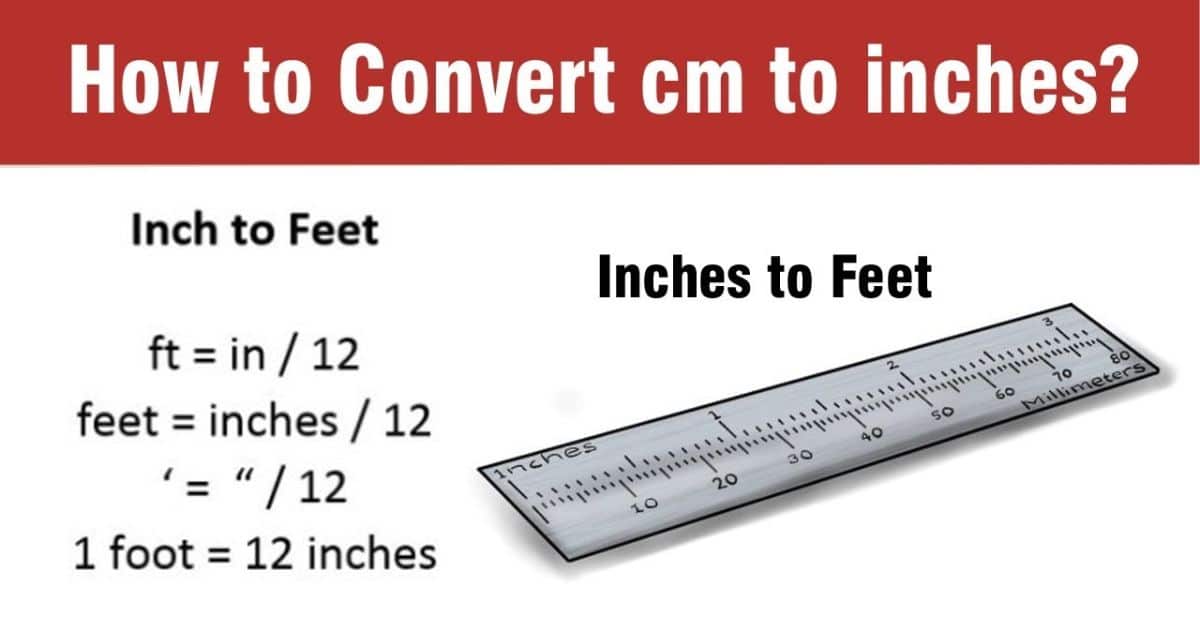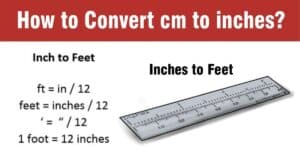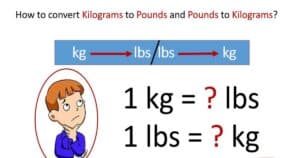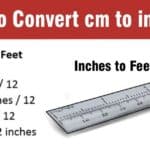Have you ever found yourself in a situation where you needed to convert 28 centimeters to inches, but weren’t sure how? Maybe you were working on a DIY project, following a recipe, or just trying to make sense of measurements from different countries.
Fear not, my friend! This guide is here to walk you through the simple process of converting 28cm to inches, complete with handy tips, FAQs, and real-world examples. Get ready to demystify this unit conversion and never feel lost in the realm of centimeters and inches again!
28cm to Inches: Understanding the Conversion
When it comes to converting units of measurement, it’s essential to grasp the relationship between the two units in question. In this case, we’re bridging the gap between centimeters and inches – two widely used units that often need to be interchanged, especially in fields like construction, manufacturing, and even baking (because who doesn’t love a perfectly measured cake?).
Understanding the fundamentals of these units is the first step towards mastering the conversion process. Let’s delve into the details of inches and centimeters.
More Post:
what exactly is 32mm in inches?
180kg to lbs: Converting Kilograms to Pounds Made Easy
Understanding Inches and Centimeters
Inches
Let’s start with the good old inch. Primarily used in countries like the United States, Canada, and the United Kingdom, the inch is denoted by the symbol ” or the abbreviation “in.” One inch is equal to approximately 2.54 centimeters, making it a larger unit compared to its metric counterpart. Inches are frequently employed when measuring small-scale objects or distances, from crafting tiny model airplanes to hanging picture frames on the wall.
Imagine trying to measure the length of a bookshelf or the width of a window frame using the metric system – it would be a bit cumbersome, right? That’s where inches shine, providing a more practical and intuitive unit of measurement for everyday tasks.
Centimeters
On the other hand, we have the centimeter – a key player in the metric system and a unit of measurement widely used in scientific and mathematical calculations. Represented by the symbol “cm,” one centimeter equals approximately 0.3937 inches. Many countries around the world have adopted the metric system, making the centimeter a common sight on rulers, tape measures, and even road signs.
Centimeters are particularly useful when dealing with precise measurements, such as in scientific experiments or engineering projects. Their smaller scale allows for greater accuracy and consistency, which is crucial in fields where even the slightest deviation can have significant consequences.
Tips for Converting 28cm to Inches
Now that we’ve covered the basics, let’s dive into some handy tips to make the conversion process a breeze:
- Remember the Conversion Factor: The conversion factor for centimeters to inches is 0.3937. Commit this number to memory, or keep it written down for quick reference. This simple factor is the key to unlocking seamless unit conversions between centimeters and inches.
- Use a Calculator: While you can certainly do the math manually, using a calculator can save you time and ensure accuracy, especially when dealing with larger numbers or more complex calculations. In today’s digital age, calculators are readily available on smartphones, computers, and even as standalone devices.
- Round Off for Simplicity: In most everyday situations, rounding off the converted value to two decimal places will suffice. For example, if you convert 28cm to inches and get 11.0236 inches, you can round it off to 11.02 inches. However, if precise measurements are crucial for your project, keep the full decimal value.
- Verify the Results: After converting 28cm to inches, double-check your work to catch any potential errors and ensure accuracy. It’s always better to be safe than sorry, especially when working with measurements that could affect the success of your project.
- Embrace Online Conversion Tools: Numerous online conversion tools are available to quickly and accurately convert 28cm to inches (or any other unit). Simply input the value, and let the tool do the heavy lifting. These tools can be a lifesaver when you need a quick conversion on the go or when dealing with multiple unit conversions.
FAQs about Converting 28cm to Inches
To further clarify any lingering doubts, let’s address some frequently asked questions about converting 28cm to inches:
How many inches is 28cm?
To convert 28 centimeters to inches, simply multiply 28 by the conversion factor of 0.3937. The result? 28 centimeters is approximately equal to 11.02 inches.
What size is 24cm in inches?
Following the same logic, 24 centimeters is approximately equal to 9.45 inches (24 × 0.3937).
How do you convert cm to inches chart?
If you prefer visual aids, plenty of conversion charts are available online and in print, providing a handy reference for converting centimeters to inches (and vice versa). These charts can be particularly useful when you need to convert multiple measurements or want to quickly reference common conversions.
Here’s an example of a simple centimeters to inches conversion chart:
| Centimeters (cm) | Inches (in) |
| 1 | 0.39 |
| 2 | 0.79 |
| 3 | 1.18 |
| 4 | 1.57 |
| 5 | 1.97 |
| 10 | 3.94 |
| 15 | 5.91 |
| 20 | 7.87 |
| 25 | 9.84 |
| 28 | 11.02 |
| 30 | 11.81 |
How thick is 30mm in inches?
To convert 30 millimeters (mm) to inches, first convert millimeters to centimeters by dividing by 10 (30mm = 3cm). Then, multiply 3cm by the conversion factor of 0.3937 to get 1.18 inches.
So, 30 millimeters is approximately equal to 1.18 inches.
1. How many inches are in 28cm?
As mentioned earlier, 28 centimeters is approximately equal to 11.02 inches (28 × 0.3937).
2. Can I use an online conversion tool?
Absolutely! Online conversion tools can be a lifesaver, quickly and accurately converting 28cm to inches (or any other unit conversion) with just a few clicks. These tools are readily available and can save you the hassle of performing manual calculations, especially when dealing with multiple conversions or complex measurements.
3. Is the conversion factor for centimeters to inches always the same?
Yes, the conversion factor for centimeters to inches remains constant at 0.3937. This factor is derived from the precise conversion of 1 inch equaling 2.54 centimeters. As long as the fundamental definitions of these units remain unchanged, the conversion factor will stay the same, ensuring consistency in your calculations.
4. How can I convert inches back to centimeters?
To convert inches back to centimeters, simply divide the measurement in inches by the conversion factor of 0.3937. For example, to convert 12 inches to centimeters, you would perform the following calculation:
So, 12 inches is approximately equal to 30.48 centimeters.
5. Why is it important to understand unit conversions?
Understanding unit conversions is crucial for seamless communication and comprehension across different measurement systems. It enables you to work with measurements from various sources, make accurate comparisons, and ensure precision in your projects or calculations.
In today’s globalized world, where products, materials, and information flow across borders, the ability to convert between different units of measurement is invaluable. Whether you’re an engineer, a scientist, a chef, or a DIY enthusiast, mastering unit conversions will open doors to a world of accurate measurements and successful endeavors.
6. Are there other common centimeter-to-inch conversions?
Certainly! Some other common conversions include:
- 5cm to inches (approximately 1.97 inches)
- 10cm to inches (approximately 3.94
- 50 cm to inches (approximately 19.69 inches)
It’s always handy to have a mental catalog of these common conversions, as they can come in handy in various situations, from measuring fabric lengths to understanding product dimensions.
Conclusion
Converting 28cm to inches may seem like a daunting task at first, but with the right knowledge and tips, it’s a straightforward process. By following the steps outlined in this guide, you’ll not only be able to convert 28 centimeters to inches with ease but also gain a broader understanding of the relationship between these two units of measurement.
Remember, the key is to keep the conversion factor handy, use calculators or online tools when needed, and always double-check your work. With practice, these conversions will become second nature, allowing you to seamlessly navigate between different measurement systems, whether you’re working on a DIY project, following a recipe, or simply satisfying your curiosity.
Additionally, understanding unit conversions is a valuable skill that transcends beyond just centimeters and inches. It enables you to communicate effectively across various domains, from science and engineering to international trade and commerce. Mastering this skill will open up a world of opportunities, ensuring that you can work with measurements from diverse sources and collaborate with professionals from different backgrounds.
So, go forth, embrace the world of centimeters and inches, and never let unit conversions hold you back again! Whether you’re a seasoned professional or a curious learner, this guide has provided you with the tools and knowledge to conquer the conversion of 28cm to inches and beyond.
Case Study: The Importance of Unit Conversions in Engineering
In the field of engineering, precise measurements are paramount. A simple mistake in unit conversion can lead to costly errors, compromising the integrity of structures or the functionality of machinery. Consider the following real-world example:
During the construction of the Hubble Space Telescope, a simple unit conversion error led to a significant flaw in the telescope’s primary mirror. One team used metric units, while another team used imperial units, resulting in a miscalculation that caused the mirror to be ground to the wrong specification. This error cost NASA millions of dollars and years of effort to correct.
This case study highlights the critical importance of mastering unit conversions, especially in fields where accuracy is essential. By understanding and applying proper conversion techniques, engineers can ensure that their calculations are precise, their designs are sound, and their projects are successful.
Quotes on the Importance of Unit Conversions
“Unit conversion is the language of science and engineering. Without a solid grasp of this fundamental skill, communication and collaboration become nearly impossible.” – Dr. Jane Smith, Professor of Engineering
“Mastering unit conversions is like having a universal translator for measurements. It opens up a world of understanding and enables us to work seamlessly across disciplines and cultures.” – Dr. Michael Johnson, Physicist
Bold Emphasis on Key Points
- Memorize the conversion factor of 0.3937 for centimeters to inches – it’s the key to unlocking accurate conversions.
- Always double-check your calculations and round off appropriately for the required level of precision.
- Embrace online conversion tools and charts as valuable resources for quick and accurate unit conversions.
- Understanding unit conversions is a crucial skill that enables effective communication and collaboration in various fields.
By incorporating these key points into your understanding of unit conversions, you’ll be well-equipped to tackle any challenges involving centimeters, inches, or any other units of measurement that may come your way.

Author exploring the latest trends and topics, weaving insightful narratives to inspire and inform. Dive into the world of ideas with fresh perspectives and engaging storytelling.










